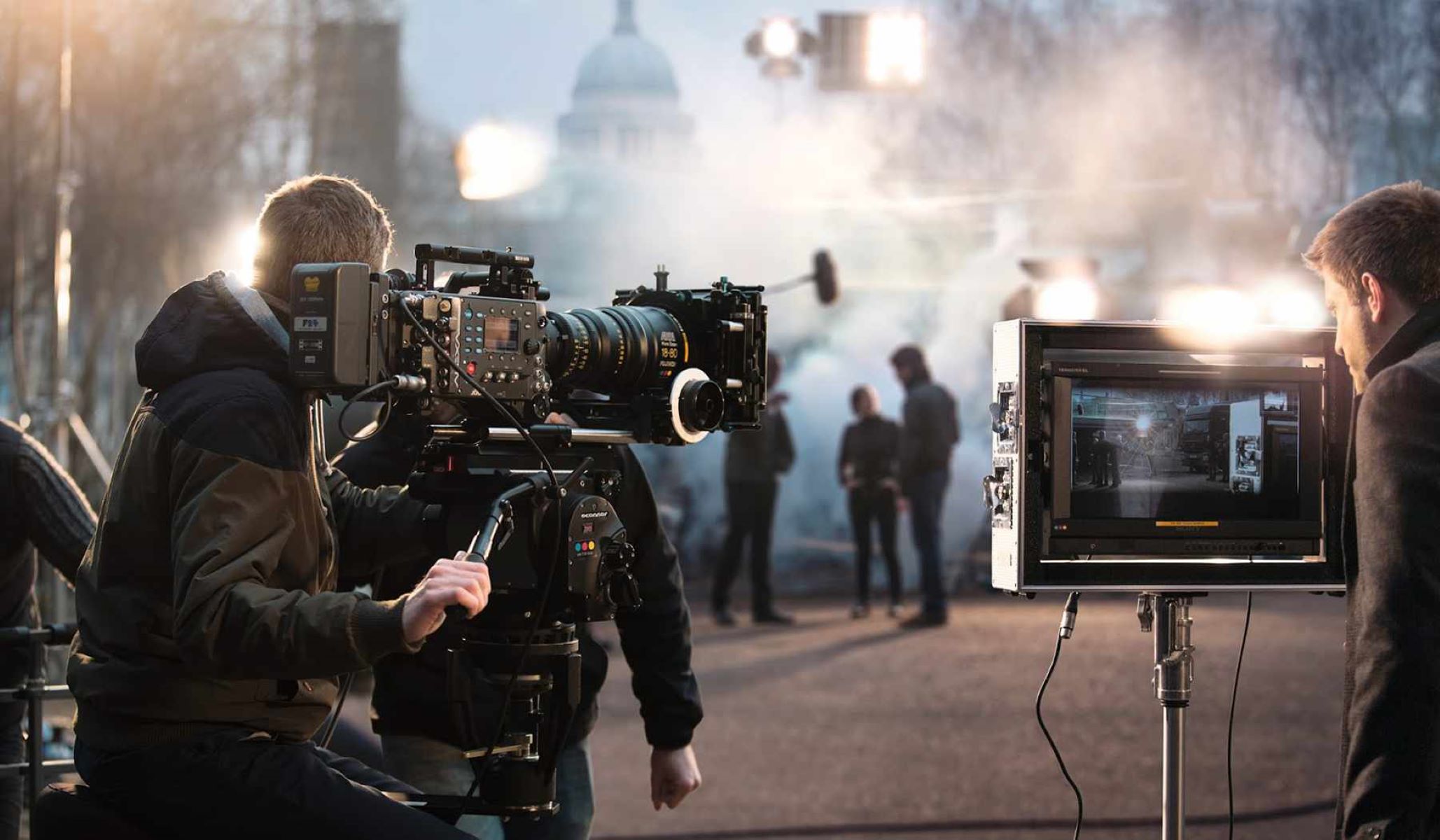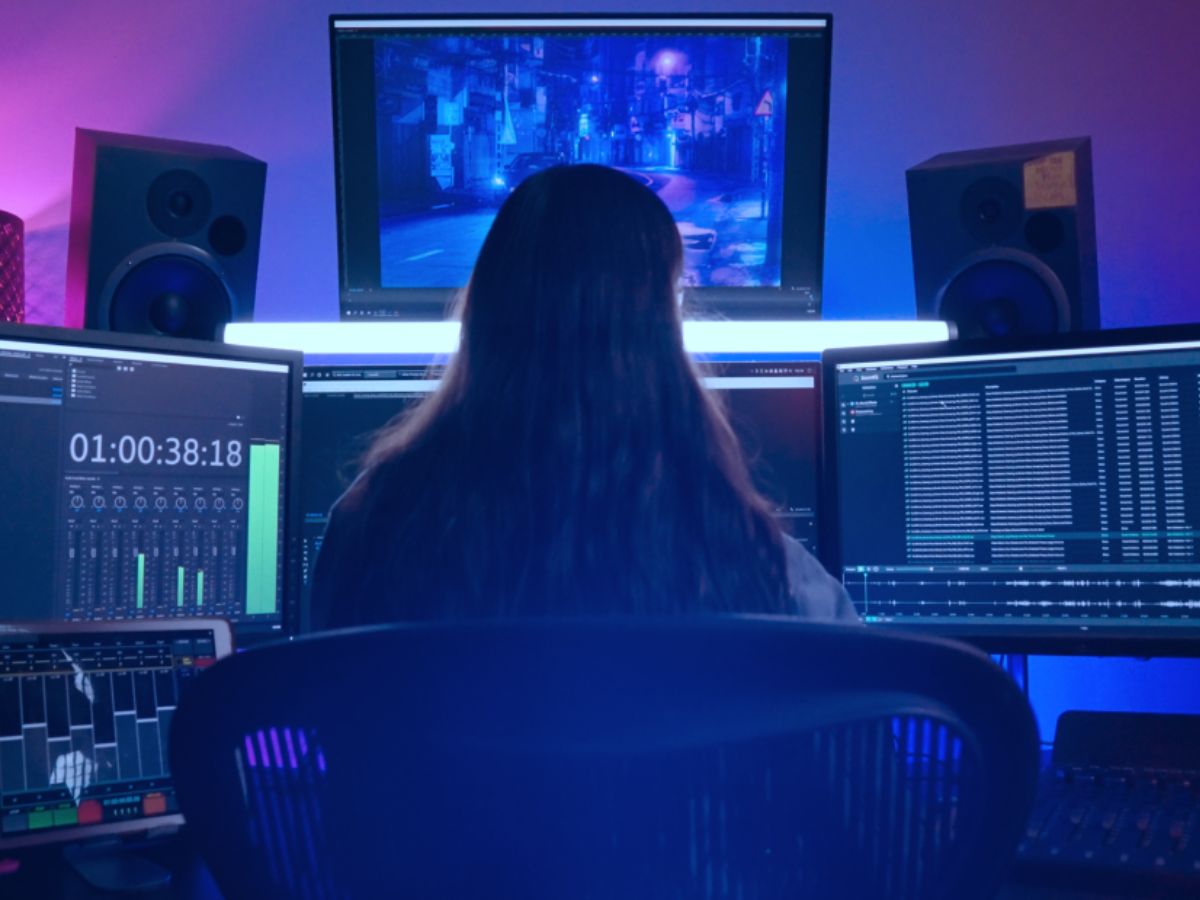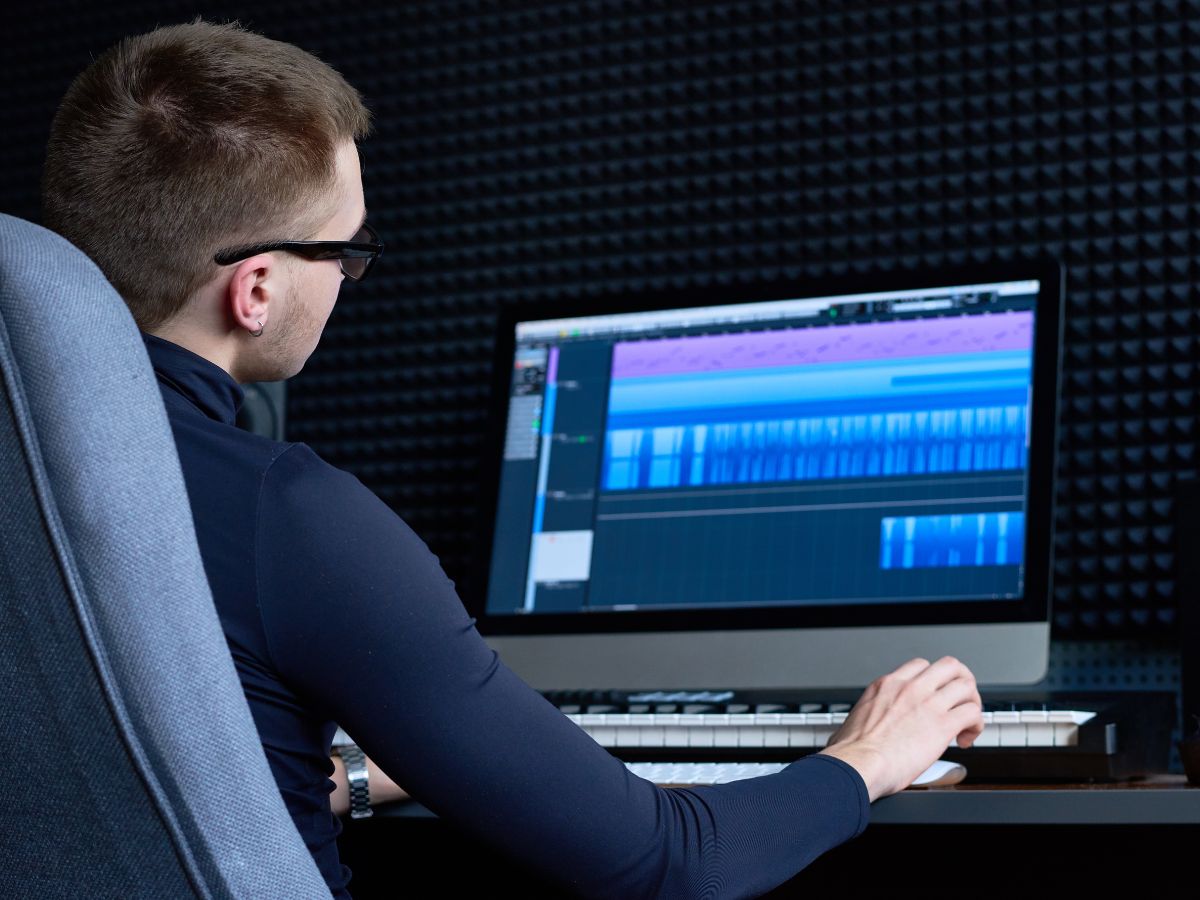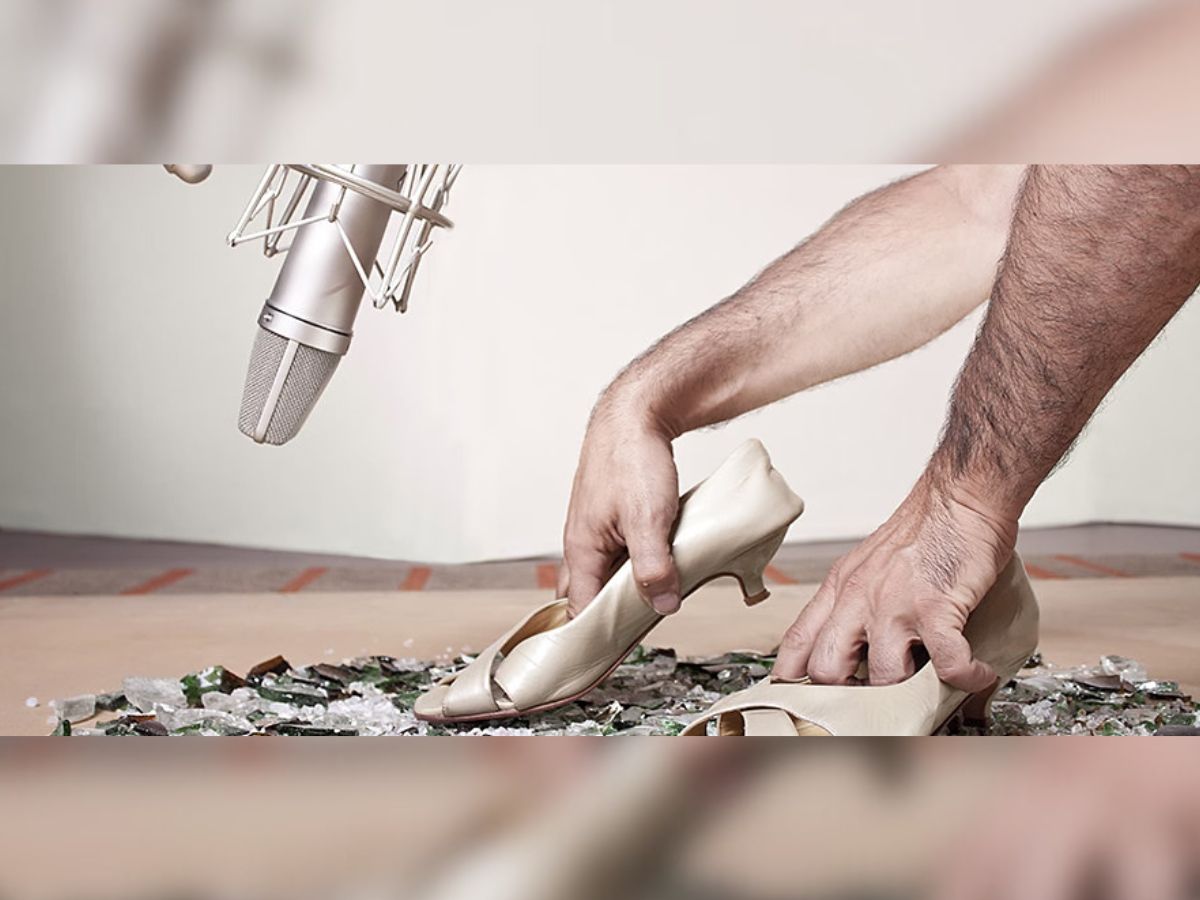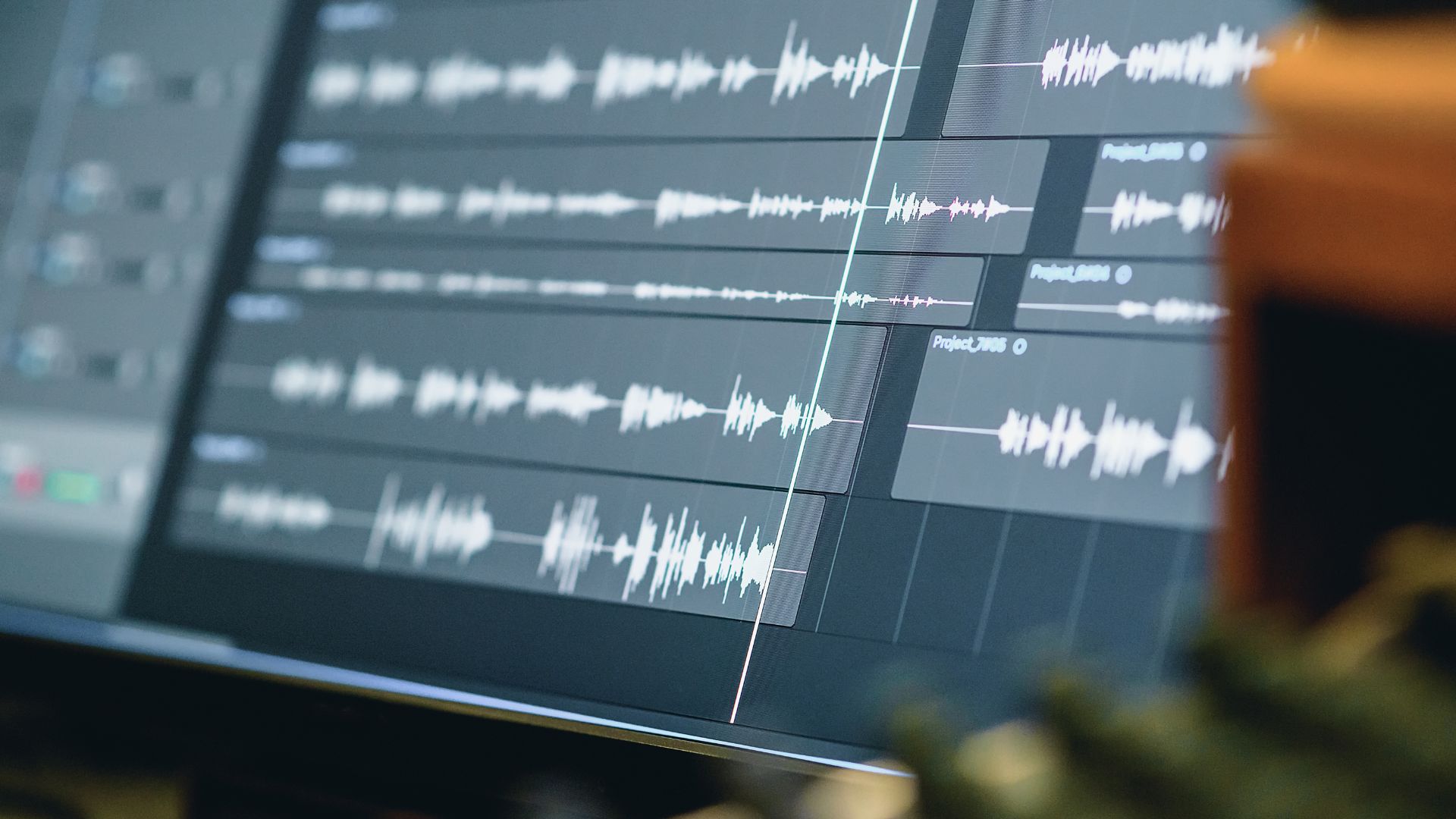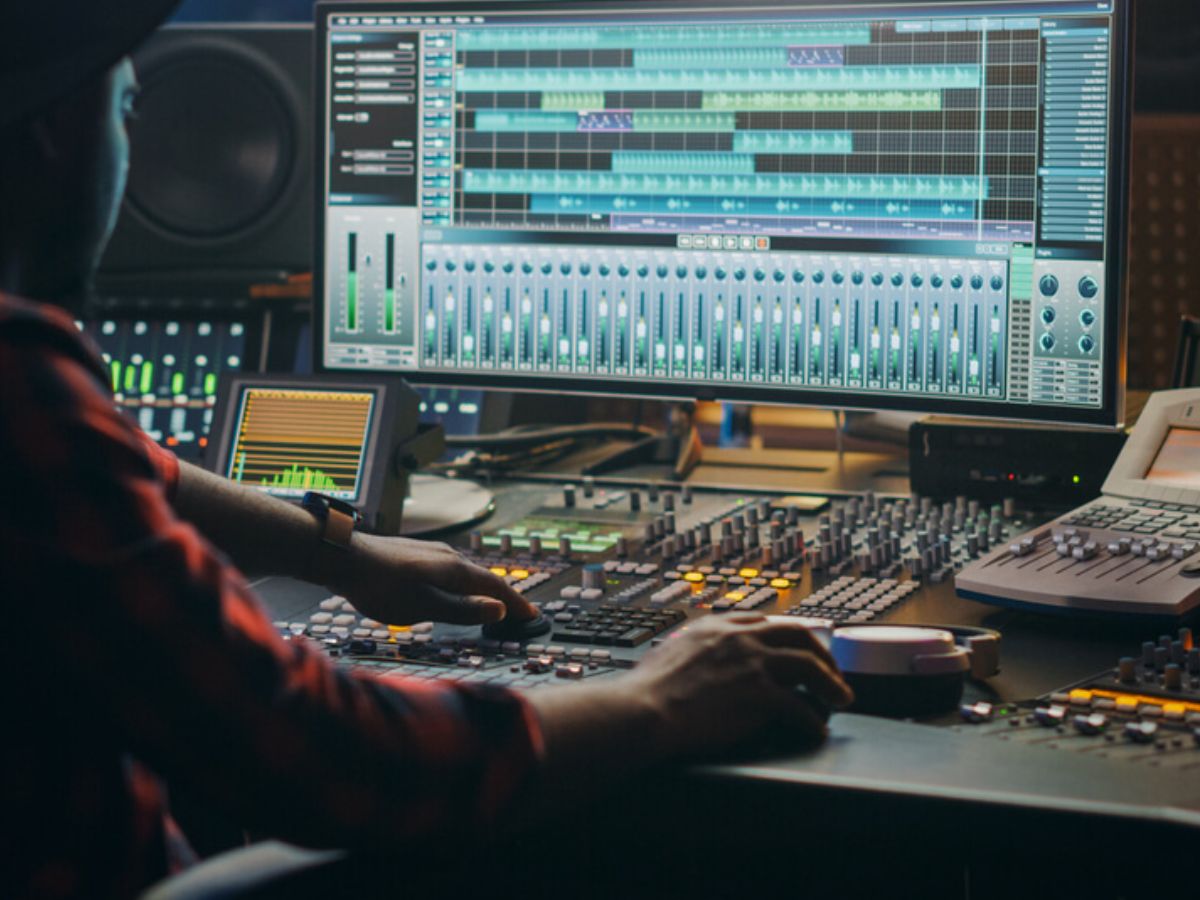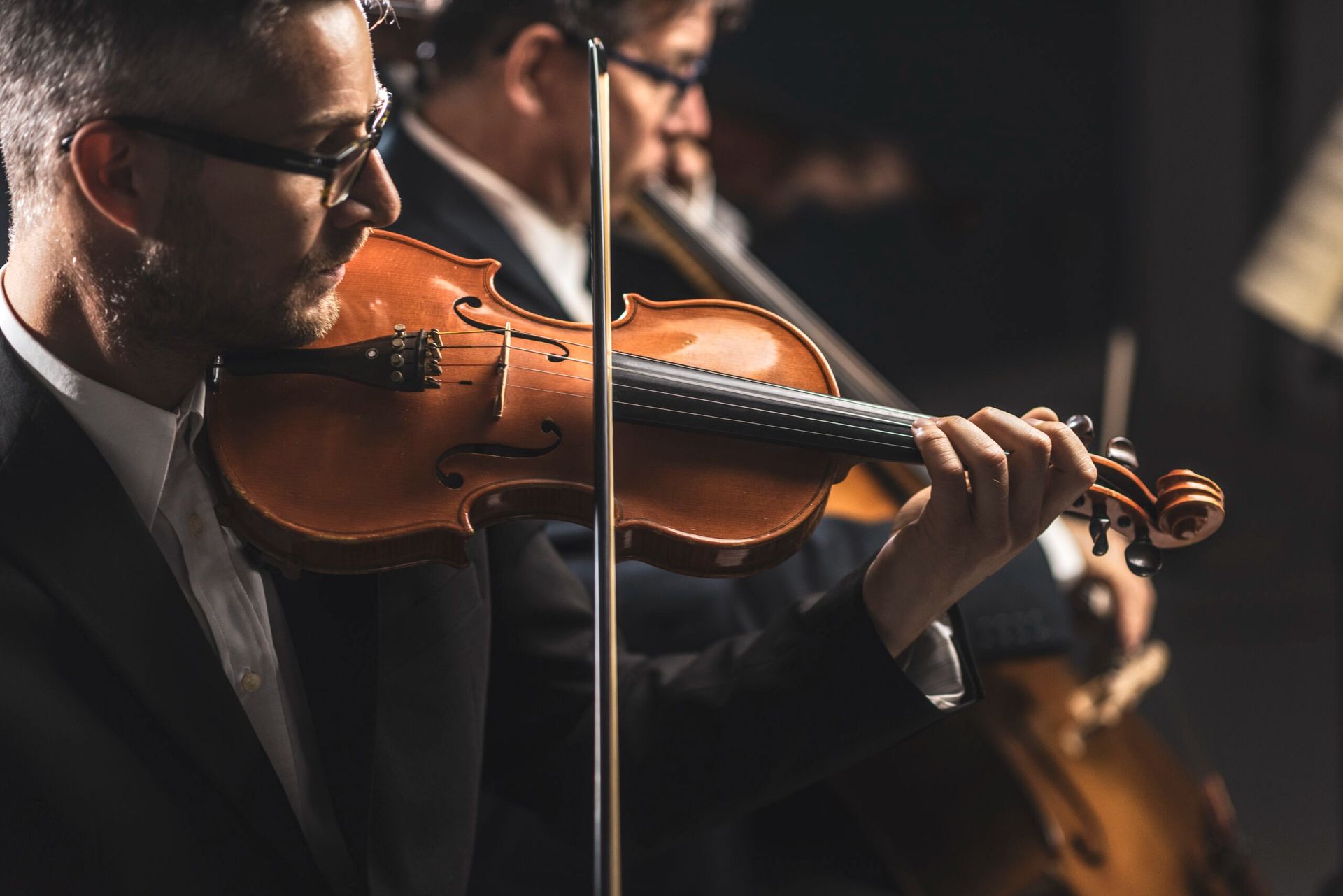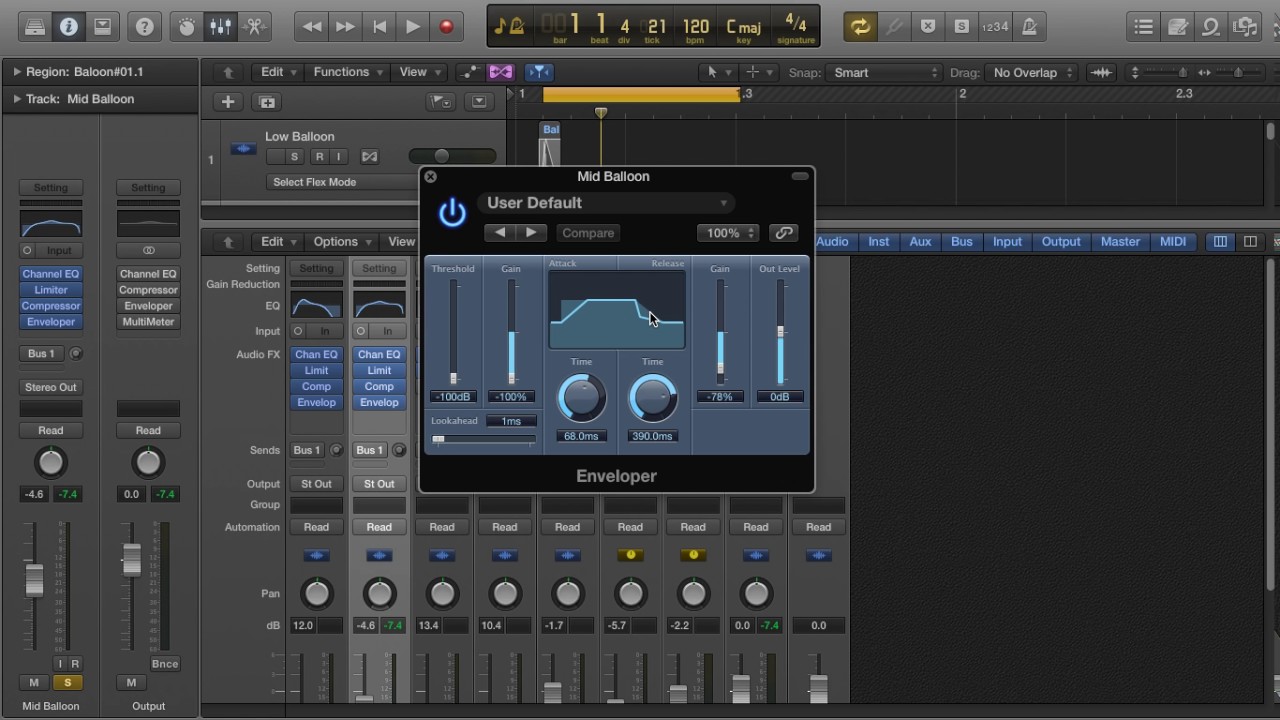Home>Production & Technology>Sound Effects>What Are Some Sound Effects That Are In Thriller Movies
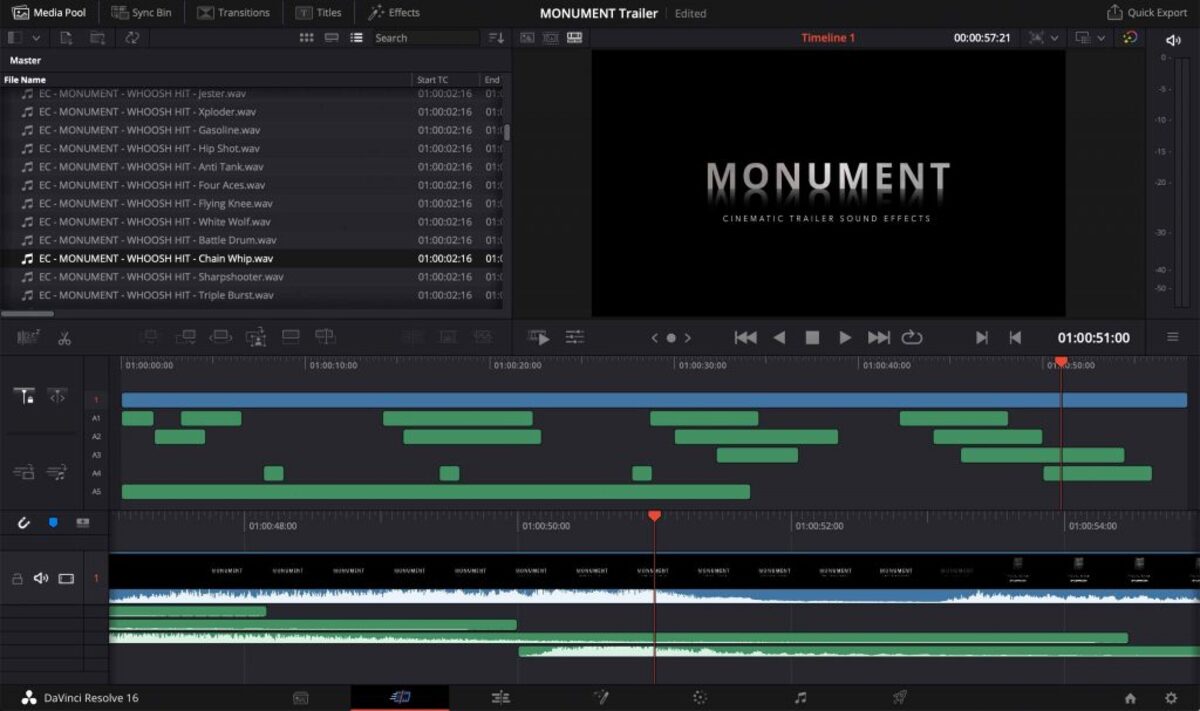

Sound Effects
What Are Some Sound Effects That Are In Thriller Movies
Published: November 24, 2023
Discover the spine-chilling sound effects used in thriller movies to create suspense and thrill. Explore how sound engineering enhances the cinematic experience.
(Many of the links in this article redirect to a specific reviewed product. Your purchase of these products through affiliate links helps to generate commission for AudioLover.com, at no extra cost. Learn more)
Table of Contents
Introduction
Welcome to the thrilling world of sound effects in movies! Sound effects play a crucial role in creating an immersive cinematic experience, especially in the realm of thriller movies. They add depth, suspense, and excitement to the scenes, keeping the audience on the edge of their seats. From bone-chilling jumpscares to haunting background music, these carefully crafted sound elements contribute to the overall intensity and emotional impact of the story.
In this article, we will explore some of the most commonly used sound effects in thriller movies. These effects are designed to heighten the tension, build suspense, and evoke powerful emotions in the audience. From the art of Foley to the use of specific sound effects, we will delve into the techniques used by sound designers and engineers to create a truly captivating auditory experience.
So, grab your popcorn and get ready to discover the intricate world of sound effects in thriller movies. Whether you’re a fan of heart-pounding horror or gripping psychological thrillers, understanding the role and impact of sound effects will give you a whole new appreciation for the craft behind these captivating films.
Foley Art
One of the key elements of sound effects in thriller movies is Foley art. Foley artists use a variety of everyday objects and props to recreate realistic sounds that accompany the on-screen action. From footsteps to the sound of a door closing, Foley artists meticulously craft sounds that help bring the movie to life.
For example, imagine a scene where the protagonist is being chased through a dark, eerie forest. The sound of twigs snapping underfoot, leaves rustling, and heavy breathing all add to the suspense and realism of the moment. Foley artists recreate these sounds by using materials such as crushed cornflakes or coconut shells for the sound of footsteps on different surfaces, or by rustling cellophane to mimic the sound of leaves being disturbed.
The art of Foley is a delicate balance between creativity and precision. Foley artists have to carefully choose the right objects to achieve the desired sound effect while considering the timing and synchronization with the on-screen action. It requires skill and experience to create sounds that seamlessly blend with the visuals, enhancing the overall suspense and tension of the scene.
Next time you’re watching a thriller movie, pay close attention to the sound effects. Notice how subtle sounds, like the creak of a floorboard or the jingle of keys, can significantly contribute to the atmosphere and suspense of a scene. These meticulously crafted sound effects, brought to life by Foley artists, play a vital role in immersing the audience in the world of the movie and heightening their emotional experience.
Jump Scares
Jump scares are a staple in the world of thriller movies, designed to startle and frighten the audience. These moments of sudden shock are often accompanied by specific sound effects that further intensify the scare factor.
When it comes to jump scares, timing is everything. The sudden appearance of a ghost, a masked killer, or a loud noise can send shivers down our spines. Sound effects, such as a piercing scream, a loud bang, or a screeching violin, are strategically employed to evoke a visceral reaction from the audience and elicit a fear response.
Sound designers often use techniques like “stingers” to enhance the impact of jump scares. A stinger is a short, sharp sound effect that creates a jolting sensation. It can be a sudden burst of music, a high-pitched screech, or a discordant note. These abrupt and unexpected sounds serve as auditory triggers, catching viewers off guard and intensifying the element of surprise.
Jump scares rely heavily on the element of surprise, and sound effects play a crucial role in building anticipation and setting up the scare. The absence of sound, followed by a sudden, loud sound effect, creates a jarring contrast that heightens the overall impact of the scare. It’s this combination of audio and visual cues that keeps us on the edge of our seats and sends our hearts racing.
Next time you find yourself watching a thriller movie, pay attention to how jump scares are executed. Listen for the carefully crafted sound effects that accompany these moments and observe how they contribute to the suspense and thrill of the scene. Jump scares may startle us, but it’s the clever use of sound effects that makes them truly memorable and effective in keeping us on the edge of our seats.
Suspenseful Music
One of the most effective tools in creating tension and anticipation in thriller movies is the use of suspenseful music. Just like a well-crafted jump scare, the right musical score can heighten the emotional impact and keep the audience on the edge of their seats.
Suspenseful music often features intense, atmospheric melodies, and dissonant chords. It sets the tone for a scene, signaling danger, mystery, or impending doom. The music builds gradually, creating a sense of unease and anticipation in the viewer’s mind.
Take, for example, the iconic “Jaws” theme. The simple but ominous two-note motif instantly triggers a feeling of dread and impending danger. As the motif repeats, gradually speeding up, the tension mounts, creating a heightened level of suspense. This music has become synonymous with imminent threat and danger.
Another example is the eerie, haunting music in Alfred Hitchcock’s “Psycho.” The piercing violin screeches contribute to the sense of madness and terror, intensifying key moments and leaving a lasting impression on the audience.
Music acts as a storytelling device, guiding our emotions and enhancing our connection with the characters and the narrative. Suspenseful music is carefully chosen to complement the visuals and amplify the intensity of the scenes. It draws viewers deeper into the story and heightens their emotional investment in the outcome.
Next time you watch a thriller movie, pay attention to the power of the music. Notice how the suspenseful score raises your heart rate and adds an extra layer of tension to the on-screen events. The right choice of music can make or break a scene, leaving a lasting impression and making the movie-watching experience truly unforgettable.
Creaking Doors and Floorboards
In the realm of thriller movies, creaking doors and floorboards are often used to heighten suspense and create an eerie atmosphere. These subtle sound effects can elicit a sense of anticipation and unease in the audience, as they signify the presence of something or someone unknown.
A creaking door can be a powerful auditory cue, signaling a potential threat or a hidden secret waiting to be discovered. It can build tension as characters cautiously open a door, uncertain of what lies behind it. The squeak of hinges or the groaning of wood can send chills down our spines, making us hold our breath in anticipation.
Similarly, the sound of floorboards creaking underfoot can create a sense of unease and vulnerability. It can contribute to the feeling of being watched or followed, adding to the suspenseful atmosphere of the scene. Each creak becomes a subtle reminder that danger may be lurking just out of sight, keeping the audience on edge.
Sound designers use various techniques to create these creaking sounds. They may use actual recordings of old, creaky doors and floorboards or employ props and techniques in foley art to recreate them. The goal is to make the sounds realistic and impactful, enhancing the audience’s immersion in the story.
Next time you’re watching a thriller movie, pay attention to the subtle sound of creaking doors and floorboards. Notice how these sounds contribute to the suspense and atmosphere, adding an extra layer of tension to the scenes. Whether it’s a dark, abandoned house or a hidden passageway, the creaking sounds serve as a reminder that danger could be just around the corner.
Heartbeat Sounds
Heartbeat sounds are a powerful tool used in thriller movies to evoke a sense of fear, anticipation, and heightened emotions. By mimicking the rhythm of a racing heartbeat, these sound effects play a significant role in intensifying the tension and immersing the audience in the nerve-wracking experiences of the characters.
The sound of a pounding heartbeat can signify impending danger, a life-threatening situation, or the anxiety experienced by a character. It serves as a visceral reminder of the stakes involved and can quicken the pulse of the viewer, drawing them deeper into the narrative.
Sound designers often employ various techniques to create these heartbeat sounds. They may use recordings of actual heartbeats or utilize electronic devices to generate accurate simulations. These sounds are then strategically placed within the movie’s soundtrack, synchronizing with key moments of suspense or impending action.
Heartbeat sounds can also be used to create tension during quiet, suspenseful scenes. By gradually increasing the pace and intensity of the heartbeat, the audience’s anticipation and anxiety are heightened, creating a sense of unease and anticipation for what’s to come.
Furthermore, the absence of a heartbeat sound can also be impactful. Its sudden silence can indicate a critical turning point or a moment of intense fear where the character’s heartbeat seems to stop altogether, reflecting their own dread.
Next time you watch a thriller movie, pay attention to the presence of heartbeat sounds. Notice how they heighten the tension and elicit an emotional response within you. Whether it’s a chase scene, a suspenseful encounter, or a climactic moment, the use of heartbeat sounds adds an additional layer of psychological impact, making the viewing experience even more thrilling.
Knife and Gun Sound Effects
When it comes to creating intense and realistic scenes in thriller movies, the sound effects of knives and guns play a crucial role. These specific sound cues are carefully designed to enhance the action, heighten the tension, and immerse the audience in the experience of danger and conflict.
Knife sound effects are used to convey the danger and intensity of a close-quarters confrontation. The sound of a knife being unsheathed, the metallic clang as it strikes an object, or the chilling sound of a blade slicing through the air all contribute to the visceral impact of a threat. These sounds create a sense of unease and anticipation, foreshadowing potential violence.
Similarly, gun sound effects add a layer of realism to action-packed scenes. The sharp crack of gunfire, the slide locking back after firing, or the ricocheting sound of bullets hitting surfaces can create a dramatic and immersive experience. These effects heighten the stakes and keep the audience engaged by simulating the danger and power associated with firearms.
Sound designers employ a combination of recorded sounds, foley art, and specialized techniques to create authentic knife and gun sound effects. They carefully consider the caliber and type of weapon, the surroundings, and the desired impact of each sound. Through layering and manipulation, they ensure that each sound is impactful and adds to the overall intensity of the scene.
Next time you watch a thriller movie, pay attention to the knife and gun sound effects. Notice how these sounds enhance the action and create a heightened sense of danger. Whether it’s a suspenseful chase or a high-stakes confrontation, the realistic sound cues of knives and guns draw you deeper into the story and immerse you in the thrilling moments unfolding on screen.
Footsteps
In thriller movies, footsteps play a crucial role in building tension, creating suspense, and enhancing the overall atmosphere of a scene. The sound of footsteps can evoke a sense of mystery, anticipation, or impending danger, depending on the narrative context.
Footstep sound effects are meticulously crafted to enhance the realism and impact of on-screen movement. Different surfaces, such as concrete, wood, or gravel, require specific sound treatments to accurately portray the character’s footsteps. Foley artists often use a combination of shoe types, props, and audio editing techniques to create the desired effect.
For example, the sound of heavy, slow footsteps echoing in a dimly lit corridor can generate a feeling of dread and foreboding. Alternatively, the quick, hurried footsteps of a character running away from a pursuer can elicit a sense of urgency and fear. The rhythm, pace, and volume of the footsteps all contribute to the emotional impact of the scene.
Footstep sound effects are not limited to just the protagonist. They can also be used to heighten suspense or misdirect the audience’s attention. The distant, ominous sound of footsteps approaching from an unknown direction can create a sense of unease and suspense.
Next time you watch a thriller movie, pay attention to the diverse use of footstep sound effects. Notice how they enhance the tension and atmosphere, drawing you deeper into the story. Whether it’s a stealthy intruder, a chase sequence, or a character navigating through a dark and treacherous environment, the artistry behind the footstep sound effects helps create a truly immersive and thrilling experience.
Screeching Tires
In the adrenaline-pumping world of thriller movies, screeching tires are a classic sound effect that evokes a sense of danger, high-speed chases, and thrilling action. The screech of tires is often used to intensify car chase scenes and create a heightened sense of urgency and excitement.
Screeching tire sound effects are carefully crafted to mimic the friction between tires and the road during rapid acceleration, abrupt turns, or sudden stops. They contribute to the realism of the scene, making the viewer feel as if they are right in the midst of the thrilling chase.
Sound designers use a combination of recorded tire screeches and audio editing techniques to create the desired effect. The pitch, duration, and intensity of the screech can vary depending on factors such as the speed of the vehicles, the road surface, and the type of tires. These sounds are then layered into the movie’s soundtrack to sync with the visual action on screen, enhancing the overall impact.
Screeching tire sound effects serve multiple purposes in thriller movies. Firstly, they heighten the tension and create a sense of danger, letting the audience know that a high-stakes chase is in progress. The piercing screech of tires grabbing the road can reflect the characters’ desperation, as they navigate treacherous situations or try to escape from pursuers.
Secondly, screeching tires can act as auditory cues, alerting the audience to sudden turns or close calls. The sound effect helps convey the intensity and proximity of the action, immersing viewers in the heart-pounding moments of suspense.
Next time you’re watching a thrilling car chase scene in a movie, pay attention to the screeching tire sound effects. Notice how they increase the adrenaline and amplify the excitement of the chase. Whether it’s a getaway scene or a thrilling race against time, the authentic and well-executed tire screeches transport you into the heart of the action, making the movie-watching experience all the more exhilarating.
Thunder and Lightning
In the world of thrillers, thunder and lightning are often used to set a dark and ominous atmosphere. The booming thunder and the bright flashes of lightning contribute to the overall sense of tension, suspense, and impending danger in the movie.
Thunder sound effects are carefully designed to mimic the deep, rumbling noise that accompanies a thunderstorm. The sound of distant thunder gradually building and intensifying can create a sense of foreboding, while a sudden, loud clap of thunder can startle and jolt the audience. These sound effects serve to heighten the emotional impact of a scene, especially during key moments of suspense or revelation.
Lightning, although silent by nature, is often accompanied by a synchronized sound effect to enhance its visual impact. This sound effect can vary from a crackling electrical discharge to a sharp, piercing sound. The timing and intensity of the lightning sound effect emphasize the suddenness and power of the visual flash, adding to the overall atmospheric effect.
Together, thunder and lightning sound effects work in harmony to create an immersive experience. They can be used to signal the approach of a climactic moment, emphasize a jump scare, or heighten the sense of isolation and vulnerability in a character.
Additionally, thunder and lightning sound effects can serve as important narrative devices. They can reflect the turmoil within characters, mirror their internal conflicts, or foreshadow significant events. The contrast between the calm before the storm and the chaotic storm itself adds depth and symbolism to the movie’s storytelling.
Next time you’re watching a thrilling movie, pay attention to the use of thunder and lightning sound effects. Notice how they contribute to the overall atmosphere, heighten the suspense, and create a sense of unease. Whether it’s a chilling horror flick or a gripping psychological thriller, the artful incorporation of thunder and lightning sound effects adds an extra layer of intensity to the viewing experience.
Final Thoughts
The art of sound effects in thriller movies is a captivating field that adds depth, tension, and excitement to the cinematic experience. From the meticulous craftsmanship of Foley artists to the strategic use of specific sound cues, these effects play a crucial role in immersing the audience in the gripping world of thrillers.
The sound of creaking doors and floorboards can send chills down our spines, hinting at unknown dangers lurking within the shadows. Heartbeat sounds can quicken our pulse, mirroring the fear and anticipation experienced by characters on-screen. Knife and gun sound effects make action sequences come alive, adding an extra layer of realism and intensity.
The suspenseful music orchestrates the emotional journey, heightening the tension and guiding our emotions through the twists and turns of the plot. Jump scares startle us with their unexpectedness, enhanced by carefully timed sound effects that make our hearts race.
Footsteps draw us into the scene, creating a connection with the characters as they navigate through treacherous environments. Screeching tires and the crackle of thunder and lightning further intensify the action, making us feel as if we are right in the midst of the danger unfolding on screen.
Understanding the power and significance of sound effects in thriller movies allows us to appreciate the dedication and creativity of sound designers and engineers. Their expertise in crafting these auditory elements captivates our senses and keeps us engaged throughout the movie-watching experience.
So, the next time you sit down to watch a thrilling movie, pay attention to the intricate details of sound effects. Let yourself be transported by the artful incorporation of footsteps, heartbeat sounds, screeching tires, and more. Allow the suspenseful music and meticulously crafted soundscapes to immerse you in the thrilling world of the movie and heighten your emotional journey.
Remember, it’s not just about what we see on the screen but also about what we hear. The exquisite marriage of visuals and sound effects creates a truly unforgettable cinematic experience in the realm of thrillers.

